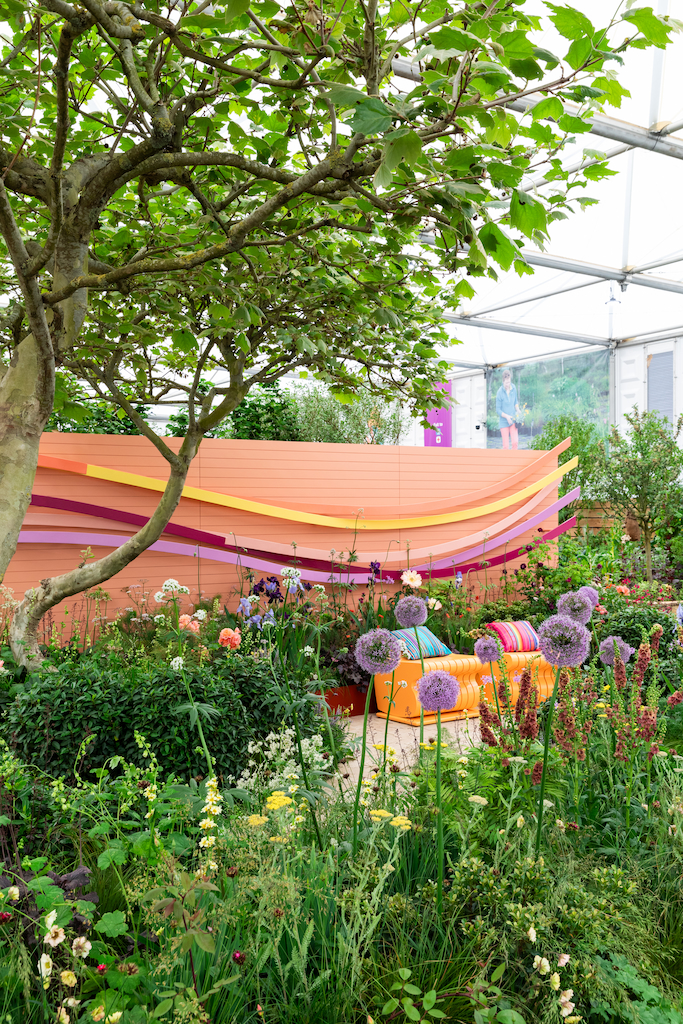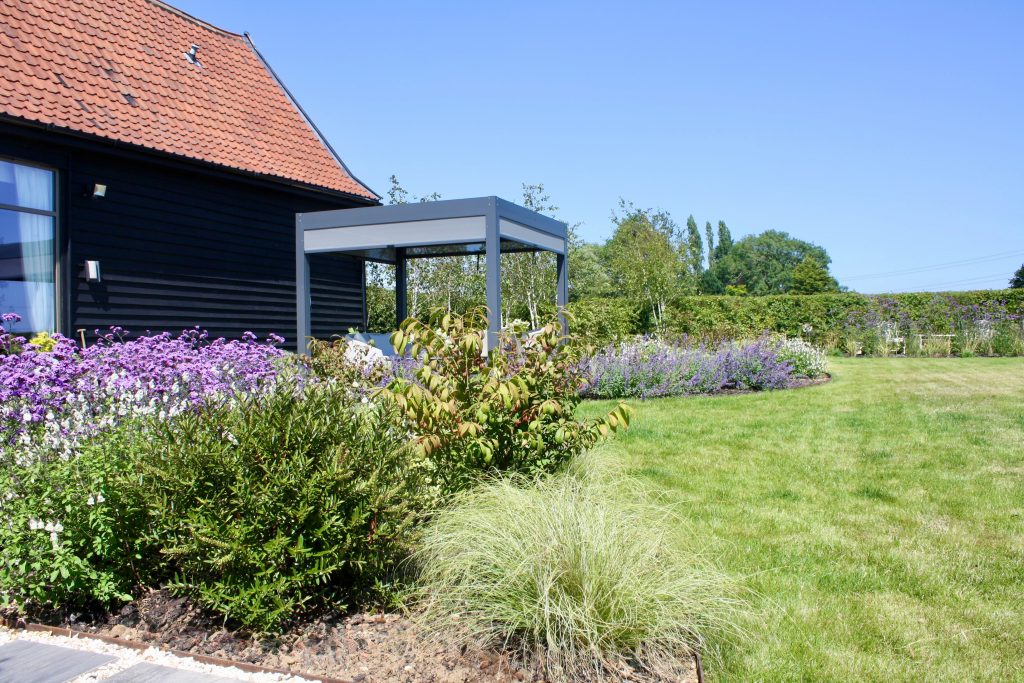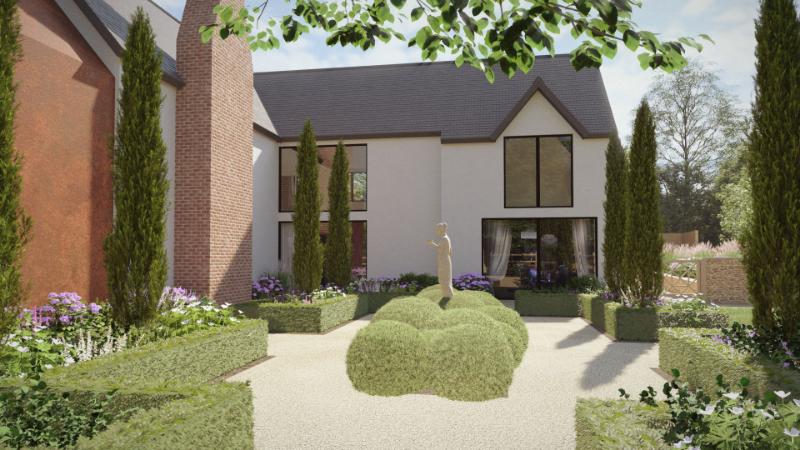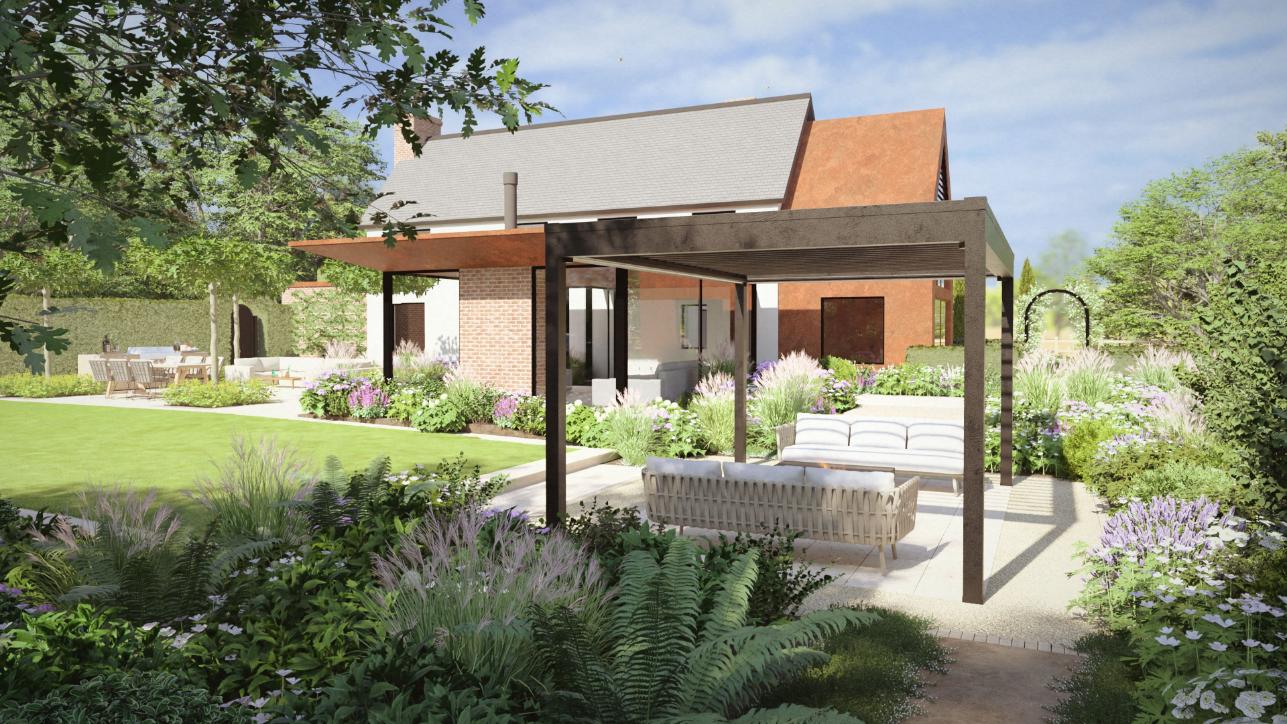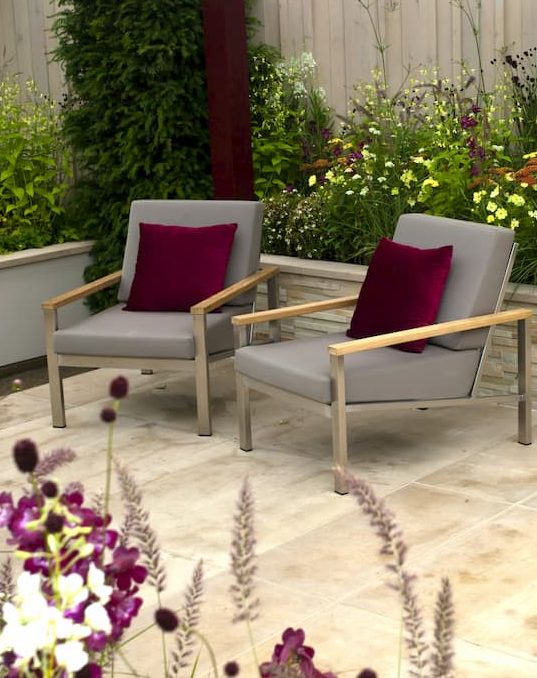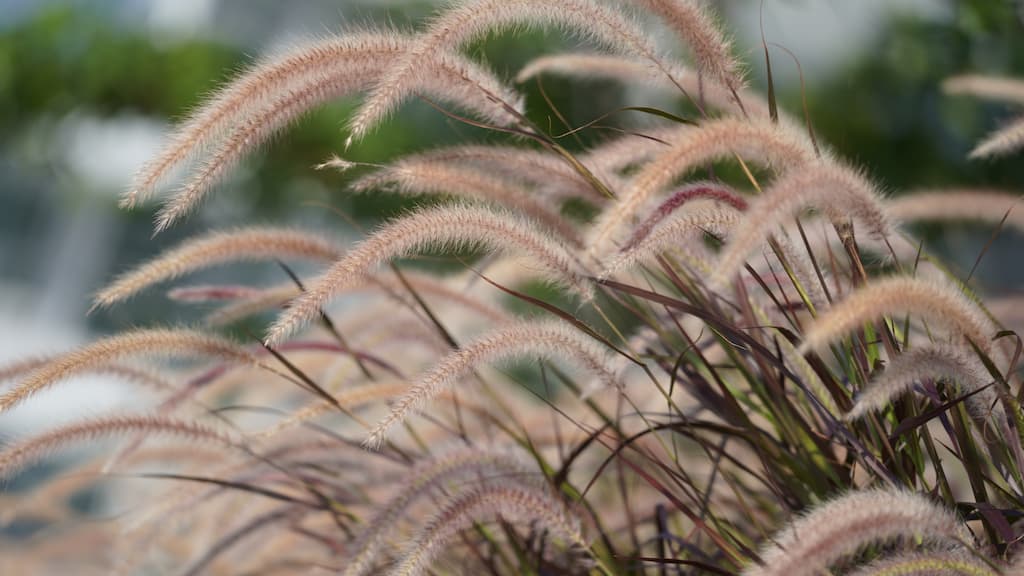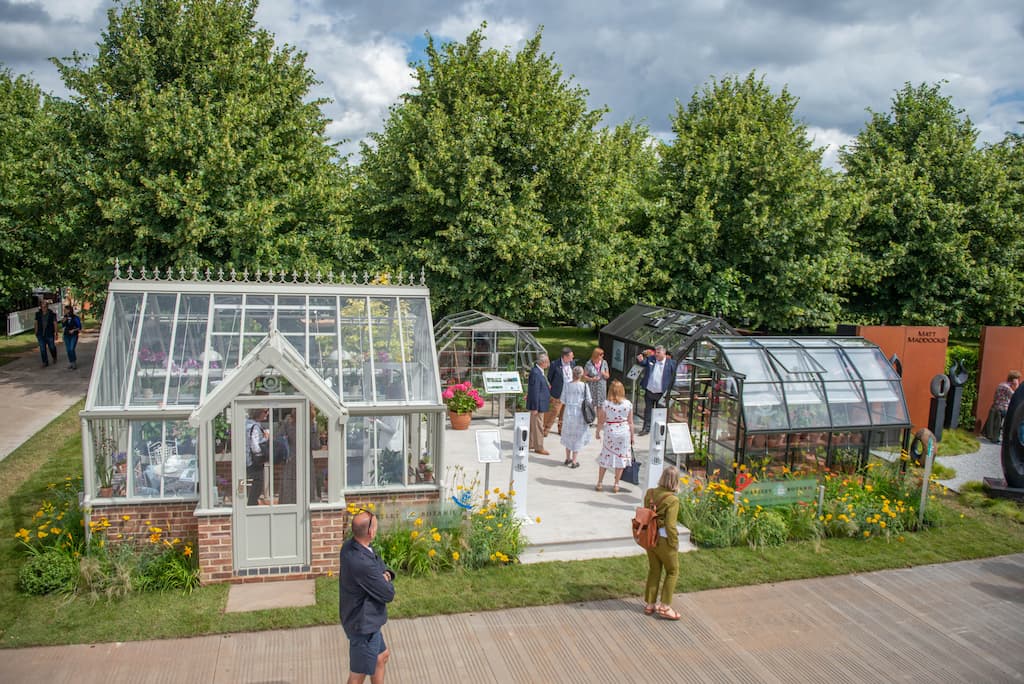The Panathlon Joy Garden
In 2024, Llevelo Garden Design were appointed by children’s charity, Panathlon, to design a garden for the RHS Chelsea Flower Show in London.
The process is a complex one which takes up to two years of planning prior to the show going live. Initially, the first hurdle was to develop a Design Concept. This needed to appeal to the 140 000 visitors that visit the show as well as the many millions more that tune in to watch the show on television.
About the Charity
Panathlon is a UK based, national charity that hosts competitive sporting events for children with disabilities and special education needs (SEND). In 2023, over 62,000 children attended a Panathlon event. The work they do is simply remarkable. Panathlon help children gain confidence, and self belief; they make them feel part of something and included, sometimes for the first time in their lives.
Penelope wanted to ensure that the garden had a positive and uplifting focus. The aim of the show garden was to raise maximum awareness of Panathlon. The message of the garden by which the team hoped to deliver on this was: Joy is for everyone and all children should have the chance to enjoy life.
Llevelo pursued a theme of ‘Joy’ and so The Panathlon Joy Garden was born.
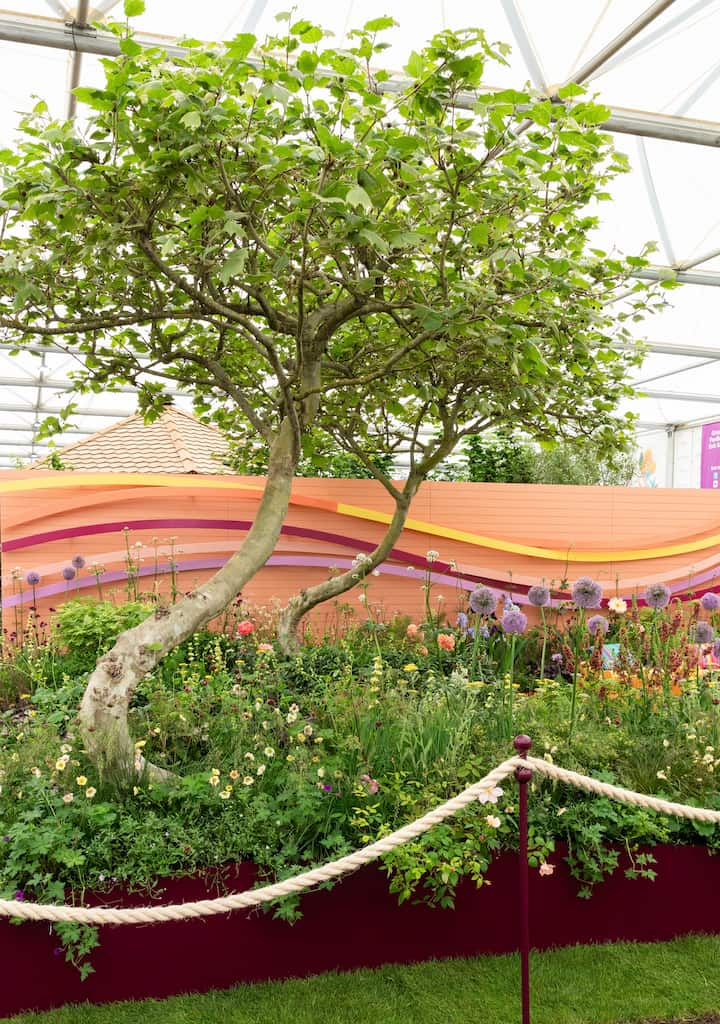
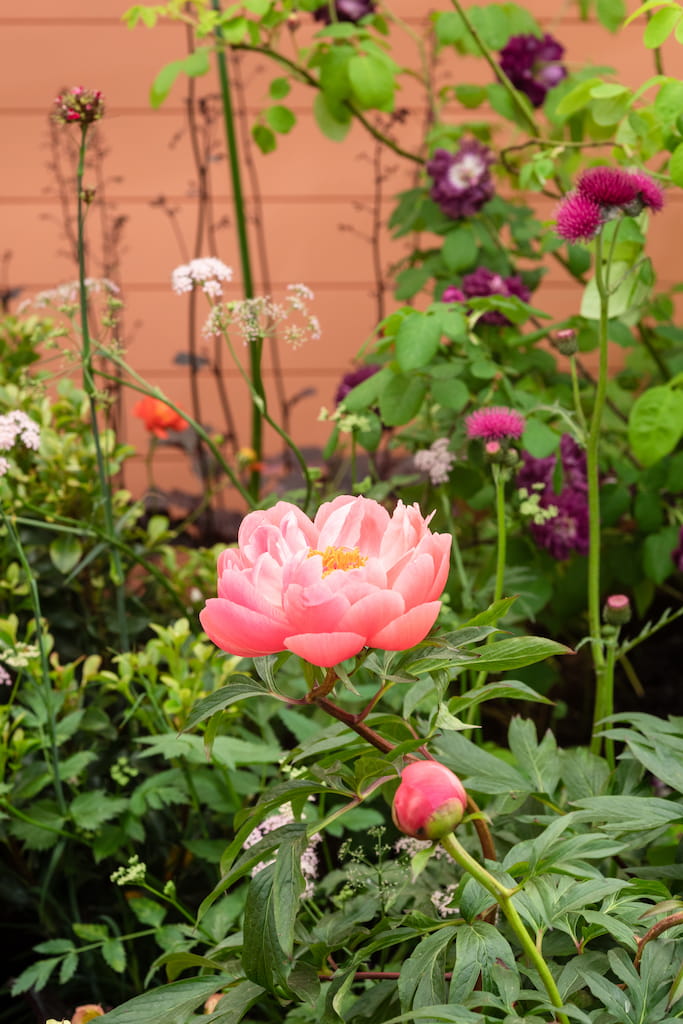
What Makes a Garden feel Joyful?
As part of the concept phase, Penelope recognised that ‘joy’ is a subjective and intangible emotion. So the question become; how do we design a garden which promotes feelings of joy to the ten of thousands of visitors to the show?
During the research, it became apparent that there are some common themes in terms of what makes people feel joy. These included unusual and fun features, elements of surprise and the unexpected, creating a sense of abundance, ensuring the garden felt light and airy, features that are playful or whimsical and magic.
It was also important that the joy garden was a relatable space for SEND children.
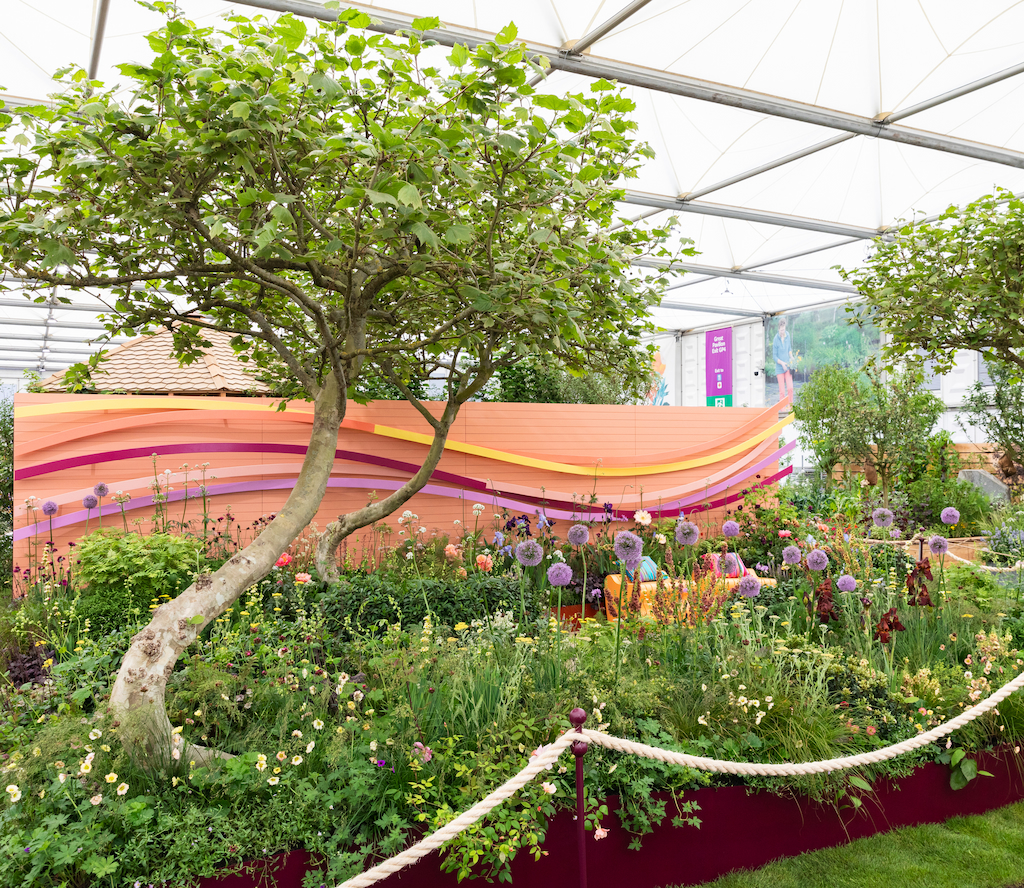
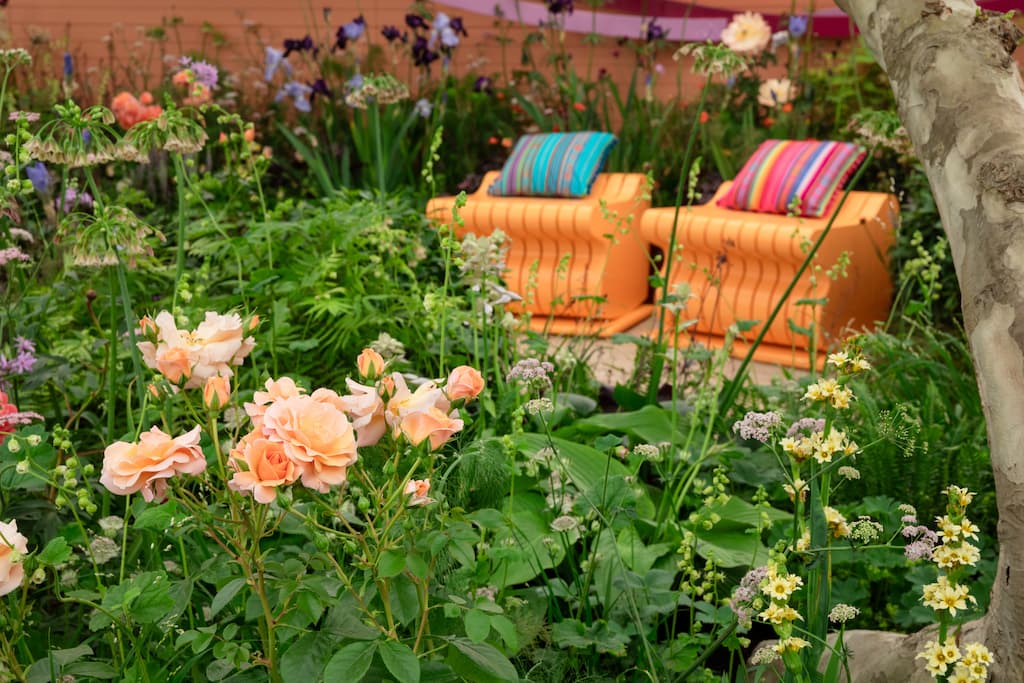
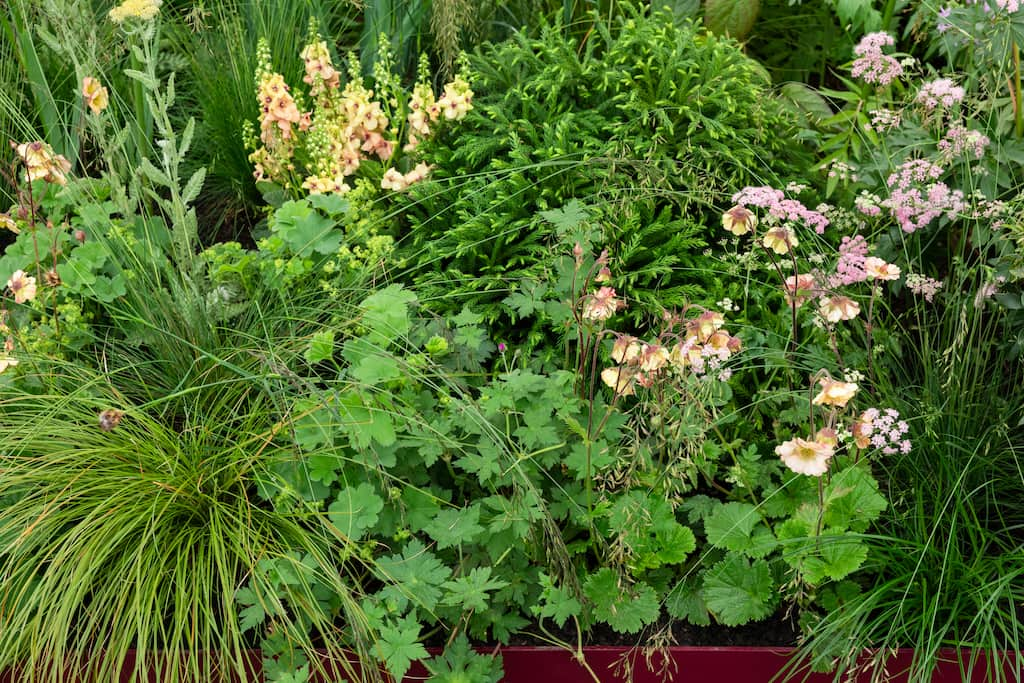
Mounded Terrain
Penelope chose to design the planting areas using undulating mounds. This allowed the planting to be seen more clearly at eye level by wheelchair users. The mounds also reflected research that supports the theory that aesthetically, joyful design is typically round or curved.
Mounds in the garden also have a playful look and feel to them as opposed to the flat terrain that we typically see in gardens. Play and joy being inherently connected particularly for children and in sport.
Furthermore, mounding terrain is also a good way to increase the diversity of planting that you can include in a planting border with the areas at the base of the mound more able to on extra moisture. This contradicts with more drought tolerant planting that would be more successful at the top of a mound.
Using Colour in the Garden
One of the key associations of joy is colour and plenty of it. Ensuring the garden had an overall look and feel that was bright and uplifting without being too loud was critical to delivering our design brief successfully.
In order to ensure that our small garden was both bright and colourful but also had a sense of harmony, we had to be selective in the way we used colour.
Green can typically be divided in to three shade categories: bottle green, yellow green and green green. When designing a planting plan, the garden will be most cohesive if there is a base colour which acts as the understory for all planting selection. This is a good rule of thumb which applies to using colour in all senses, not just in the garden.
We chose to use yellow green as the base colour. Therefore all colour selection was made either because the plant or feature shared this hue or because it was directly opposite this shade on the colour wheel.
The image to the left shows a close up image of one section of planting which illustrates the use of the lime green colour palette. From left to right, the plants include Carex testacea, Alchemilla sericata ‘Gold Strike’, Achillea ‘Moonshine’, Geum ‘Pretticoats Peach’, Verbascum ‘Jackie’, Cryptomeria japonica ‘Globosa Nana’ and Pimpinella major ‘Rosea’. This last plant of course is not ‘lime green’ but clearly a soft pink and works with the palette on account of being opposite the yellow green tones on the colour wheel.
It is also worth highlighting that the colours in general had a similar tone. Whether they are adjacent to one another on the colour wheel or an opposite pairing, they are all relatively soft, pastel shades. This was an important planting design detail that ensured the look was both light and airy as well as being harmonious and unified.
Focal Points:
Trees: Planatus x hispanica ‘Malburg’ ‘SWING’ trees – fun and curvy and still utterly brilliant. Included to demonstrate the importance of normalising difference.
Colour: An abundance of planting in various colours and shapes will help give an uplifting look and feel to the garden.
The Panathlon Joy Garden was incredibly well received at the show and was awarded a prestigious Silver Gilt Medal. Penelope and the team were incredibly proud of the achievement for their first show garden.
Because Joy is for everyone and all children deserve the chance to enjoy life
Sponsors:
A huge thanks to our sponsors; Project Giving Back who are a unique grant-giving charity that funds gardens for good causes at RHS Chelsea Flower Show. Additional thanks also to our contractors, Stewart Landscape Construction Ltd.
